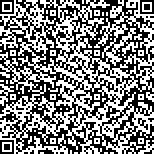| 摘要: |
| 研究基于现有生态本底评价方法仅
针对现状、无法定量分析建设行为与建成后
生态状况关联度的事实,构建密集建设区生
态状况评价方法。该方法可对规划建设方案
实施后的生态本底状况进行量化分析和预
测,逻辑如下:通过对既定空间形态下的典型
建成空间进行生态功能评价,获得相应建设
模式的生态状况代表性数据,将之赋予同类
型规划用地,获得密集建设区的生态本底模
拟图。该方法操作的关键有三:一、理清建设
管控指标与建成环境空间形态的关系,提炼
典型空间形态;二、确立密集建设环境的生
态本底评价指标体系;三、构建生态本底评
分操作规则。研究以成都为例,基于卫星影
像和实地情况,归纳了基于建设分区管控体系
的10类典型空间形态;运用专家打分法和层
次分析法构建生态评价指标体系;通过分层
典型抽样调查,评定不同空间形态的生态本底质量状况阈值,并将之赋予各个地块,生成中心城
区生态本底状况模拟图。实证表明:该方法能从整体层面判断密集建设区的生态本底状况;也可
依托控规模拟规划建设方案的未来生态本底状况发现生态空间构建和建设控制的生态关键,优
化城市生态空间格局。 |
| 关键词: 密集建成区 生态本底 空间形态 评价方法 控制性详细规划 |
| DOI:10.13791/j.cnki.hsfwest.20200307 |
| 分类号: |
| 基金项目: |
|
| Studies on Evaluation Method of Dense Built Environment Ecological Background Basedon Types of Space Form: A Case on the Central City of Chengdu |
|
BI Linglan,XU Liwen,LI Yanyu
|
| Abstract: |
| The purpose of the project is to identify the ways to optimize the ecological quality
of urban space under the intensive construction mode. This method is built on the actual state of
the ecological function and the mechanism of the ecological service functions. Its research steps
are structured in the following three points: Firstly, it follows the space construction management
and control logic, and extracts the typical spatial form and construction mode guided by different
construction indicators. Secondly, it constructs an evaluation index system for the ecological
background of densely built-up areas. Then, by evaluating the environmental quality and
ecological service functions of typical samples under different construction modes, it forms the
threshold of ecological background conditions for spatial forms. Thirdly, it proves the correlation
between the construction mode and the ecological quality of the densely built environment, and
summarizes the corresponding influence laws. On this basis, we have designed an ecological
evaluation method for condensed construction areas, in order to quantitatively analyze the
relationship between construction control and environmental ecological quality after completion.
The keys to the operation of the method are as follows: 1)to clarify the relationship between control
indicators and the formation of environmental space, then sum up the typical space forms; 2)to establish
the ecological background evaluation index system of urban intensive built-up area; 3)to set up specific
operation rules for ecological background evaluation. The empirical research operation in Chengdu is
divided into three steps: 1) The foundations rely on the construction of density zoning and space construction
controlling index system, with “construction density” as the main control index, and combine with satellite
image analysis and investigation and verification. The built environment of the central city, according to the
combination of building height and space, is classified into three typical categories of 10 small categories of
space construction models, a total of 1951 samples; 2) According to stratifying random sampling, and the
field survey under different construction modes, the ecological background of the built space is evaluated and summarized to the typical ecological background quality of the corresponding construction mode. 3) The typical data summarized by the sample research
institute is given to the plots of the corresponding construction mode, and the ecological background simulation map of the densely built-up area is generated. The
similarity between the figure and the remote sensing ecological index map is compared to judge the fitting accuracy. The experiment proves that according to the
ecological background presented by the simulation map. So we are able to analyze the spatial problems that may exist in the construction and planning that are
not conducive to the optimization of the urban ecological environment, and also to find the key areas and spatial modes that optimize the urban spatial structure.
Compared with the past urban ecological environment assessment methods, this method is characterized by the relationship between the planning and control index
system and the actual built-up space ecological status through the evaluation of the ecological status of the typical space construction model – not only based on
satellites. The image is roughly evaluated on the spatial scale of the environment, and more importantly, the ecological status after the completion of the planting plan
can be simulated based on the control indicators to evaluate the spatial decision-making and optimize the ecological spatial planning.
This method can be used to simulate the ecological background status of all urban built-up areas based on planning and control and
planning schemes at the conceptual level. However, the method based on the spatial construction mode of the typical extraction of the ecological
background has undergone two layers of abstraction, so there will be deviations in the reduction of the real situation - it is not as accurate as the
remote sensing ecological index analysis. The longitudinal unit division of the method relies on clearer boundaries such as municipal roads, natural
boundaries, and cadastral boundaries. The in-depth analysis of the fuzzy sundry plots of the inner city boundary is not sufficient, and further
research is required. However, due to the differences in development history, scale, and control systems, the typical longitudinal construction
models vary from city to city, and have to be verified and summarized in a targeted manner. The dominant ecological factors of different towns
are very different. To ensure the accuracy, it is necessary to select the evaluation elements according to the urban conditions and construct the
corresponding weight system. Empirical research in the central city of Chengdu shows that the method can judge the ecological background of
the dense construction area from the overall level. It can also be used to simulate the future ecological background of the construction control
indicators according to the planning plan, which is conducive to the discovery and construction of the ecological space pattern, and becoming the
key to optimization of controlling our city environment, and optimize the urban ecological space pattern. |
| Key words: Urban Intensive Built-Up Area Ecological Background Types of Space Form Evaluation Method Regulatory Plan |


